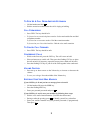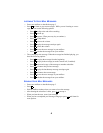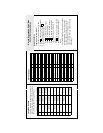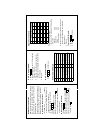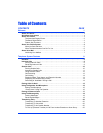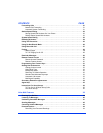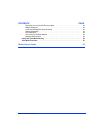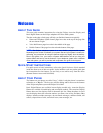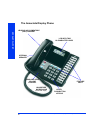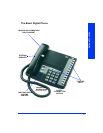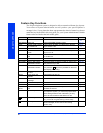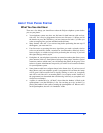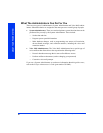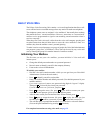
ABOUT THIS GUIDE
1
Eclipse Associate Display and Basic Digital Phone User Guide
Welcome
ABOUT THIS GUIDE
This user guide contains instructions for using the Eclipse Associate Display and
Basic Digital Phones on the Eclipse telephone and Voice Mail systems.
The tabs on the edge of each page will help you find the features more quickly.
• Phone and Telephone System feature pages have tabs at the top of the page like
the one shown at right.
• Voice Mail feature pages have tabs in the middle of the page.
• Default Feature Code pages have the tab at the bottom of the page.
NOTE: The Eclipse telephone system is a very flexible, programmable system.
Depending on the version of software your system uses and your system’s custom pro-
gramming, the procedures for using the features might vary slightly from the descrip-
tions in this guide. If so, your trainer or System Administrator can tell you how your
system differs and how to use the features. If your telephone system uses a different
voice mail system, you will be provided with a separate user guide for that system.
QUICK-START INSTRUCTIONS
For quick access to basic instructions, refer to the Quick Reference Guide attached
inside the front cover of this user guide. It also includes a tear-out pocket guide that
has instructions for the features you are likely to use while away from the office
(Remote Feature Access and Voice Mail).
ABOUT YOUR PHONE
The buttons on your phone are called “keys,” which is why the phone is sometimes
referred to as a “Keyset.” The keys are used for dialing and for access to the features
of the Eclipse telephone system and Eclipse Voice Mail.
Basic Digital Phones are available in non-display models only. Associate Display
Phones are available in both display and non-display models. The Associate Display
Phones have two-line displays with 16 characters per line. When the phone is not in
use, the display shows the extension number, user name, time of day, and date. Other
displays include reminder messages, do-not-disturb messages, numbers dialed, call
sources, elapsed time of calls, current call costs, error messages, etc.



